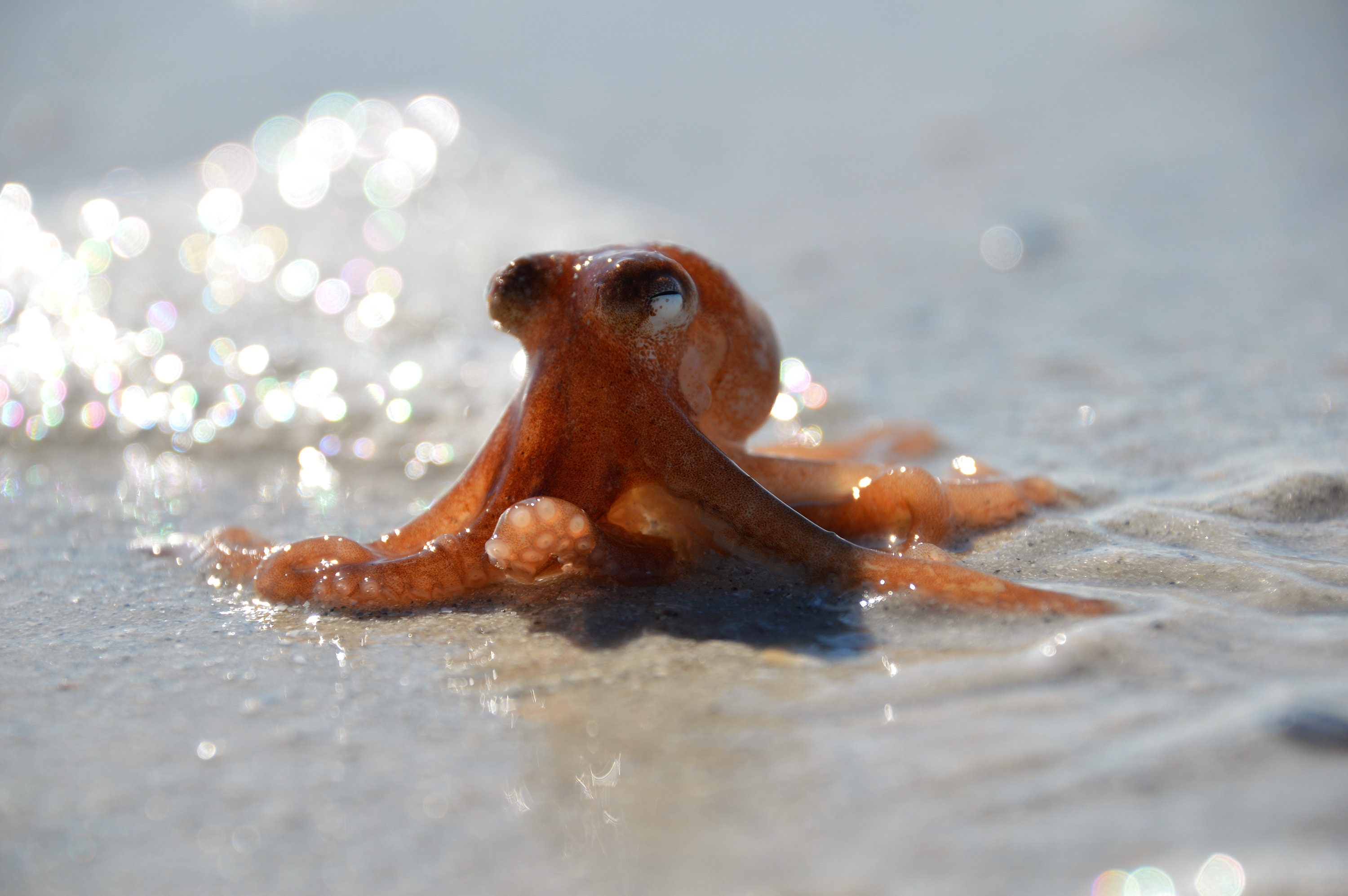
Baby Octopus: A Tiny Creature with a Big Impact
In the vast expanse of the ocean, amidst the vibrant coral reefs and swaying kelp forests, resides a diminutive creature that belies its size with its remarkable abilities and ecological significance: the baby octopus. These tiny cephalopods, often measuring less than an inch in length, play a crucial role in marine ecosystems and captivate the imagination with their unique characteristics.
Anatomy and Appearance
Baby octopuses, also known as paralarvae, emerge from their eggs as fully formed miniature versions of their adult counterparts. Their bodies are soft and gelatinous, with eight arms adorned with suckers that aid in locomotion and capturing prey. Their large, bulbous heads house two prominent eyes and a beak-like mouth used for feeding.
The skin of baby octopuses is transparent, allowing researchers to observe their internal organs and the intricate network of chromatophores that enable them to change color and pattern rapidly. This remarkable ability serves as camouflage, helping them evade predators and communicate with conspecifics.
Life Cycle and Reproduction
Baby octopuses hatch from eggs laid by adult females in protective nests or crevices. The eggs are typically small and numerous, with each female producing hundreds or even thousands of offspring. The paralarvae spend their early lives drifting in the water column, feeding on plankton and other small organisms.
As they grow, baby octopuses undergo a series of developmental stages, gradually acquiring the characteristics of adult octopuses. They develop a mantle, which houses their internal organs, and their arms become longer and more muscular. The chromatophores become more complex, allowing for a wider range of color and pattern changes.
Behavior and Ecology
Baby octopuses are solitary creatures, spending most of their time hunting for food and avoiding predators. They are opportunistic feeders, consuming a variety of small invertebrates, including crustaceans, mollusks, and fish. Their sharp beak and powerful suckers enable them to capture and subdue their prey.
In addition to their hunting prowess, baby octopuses exhibit remarkable defensive behaviors. When threatened, they can release a cloud of ink to confuse predators and make a quick escape. They can also change color and pattern to blend in with their surroundings or mimic other animals, such as sea urchins or fish.
Ecological Importance
Baby octopuses play a vital role in marine ecosystems as both predators and prey. As predators, they help control populations of small invertebrates, maintaining a balance in the food web. As prey, they serve as a food source for larger marine animals, including fish, seabirds, and marine mammals.
Furthermore, baby octopuses contribute to the cycling of nutrients in the ocean. Their feeding habits help break down organic matter, releasing nutrients back into the water column. This process supports the growth of phytoplankton, which are the foundation of marine food webs.
Conservation and Threats
Despite their small size, baby octopuses face a number of threats, including habitat loss, pollution, and overfishing. Coastal development and pollution can degrade coral reefs and kelp forests, which are important habitats for these creatures. Overfishing of adult octopuses can also reduce the number of paralarvae produced, impacting populations over time.
Conservation efforts are underway to protect baby octopuses and their habitats. Marine protected areas can help preserve coral reefs and kelp forests, providing safe havens for these tiny creatures. Sustainable fishing practices can reduce the impact on adult octopus populations, ensuring a healthy supply of paralarvae.
Scientific Research and Applications
Baby octopuses have captured the attention of scientists due to their unique characteristics and potential applications. Their ability to change color and pattern rapidly has inspired research into camouflage and communication in marine animals. Their venom, which is used to subdue prey, has potential medicinal applications, including the development of new pain relievers.
In addition, baby octopuses are used in aquaculture as a food source for other marine animals, such as fish and shrimp. Their rapid growth and high nutritional value make them a promising candidate for sustainable aquaculture practices.
Conclusion
Baby octopuses, though small in size, are fascinating creatures that play a significant role in marine ecosystems. Their unique abilities, ecological importance, and potential applications make them a subject of ongoing scientific research and conservation efforts. By understanding and protecting these tiny wonders, we can ensure their continued presence in the vast and vibrant tapestry of ocean life.
